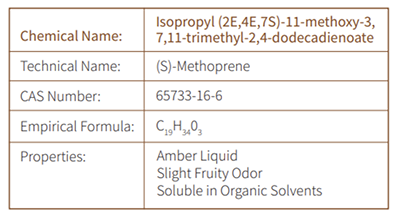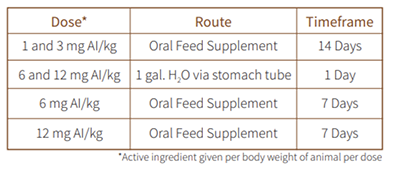As the agricultural and pest control industries continue to evolve, understanding the safety and environmental impact of commonly used substances is crucial. One such substance is (S)-Methoprene, an insect growth regulator widely utilized to control various pests. This blog addresses common concerns regarding (S)-Methoprene safety for cattle, humans, and the environment, its impact on beneficial insects and non-target species, and provides information on its regulatory status.
Chemical Characteristics and Environmental Fate of (S)-Methoprene
(S)-Methoprene belongs to the terpenoid class of compounds, similar to essential oils and other natural plant-produced materials. This classification underlines its biochemical origins and natural compatibility with the environment.

Environmental Fate
Persistence and Movement in Soil
(S)-Methoprene has a half-life of approximately ten days in sandy loam under aerobic conditions when applied at an exaggerated rate of 1000 g/Ha. It rapidly converts to CO2, remains bound in the top few centimeters of soil, and does not persist, leach, or contaminate groundwater, ensuring minimal long-term environmental impact. This illustrates the (S)-Methoprene environmental fate and highlights its limited persistence in soil.
Fate in Plants
When applied to alfalfa at the rate of 1000 g/Ha, (S)-Methoprene has a half-life of less than two days and less than one day on rice. It metabolizes rapidly into products that degrade further into normal plant nutrients, ensuring it does not linger in crops or affect their growth.
Fate in the Food Chain
Studies have shown that (S)-Methoprene does not accumulate in the food chain. It biodegrades quickly and lacks persistence, which helps to prevent long-term environmental contamination.
Persistence in Water
In field conditions, (S)-Methoprene has a half-life of 30-45 hours in unsterilized pond water. Sunlight exposure further reduces its half-life, highlighting its rapid breakdown and low persistence in aquatic environments. This quick degradation emphasizes the Altosid® IGR environmental impact and its limited persistence in water.
Safety Studies and Regulatory Status
An extensive toxicological database supports the EPA registrations of products containing (S)-Methoprene. These products exhibit a wide margin of reliability and no acute handling hazards by any exposure route, ensuring insect growth regulator safety for humans and animals alike.
(S)-Methoprene, an insect growth regulator effective against fleas, mosquitoes, horn flies, ants, sciarid flies, and stored product pests, was first registered by the EPA in 1975. It was classified as the first biochemical pesticide and is currently regulated by the Biopesticide Division of the EPA. In 1991, the EPA published the Reregistration Eligibility Document (RED) for (S)-Methoprene. In June 2003, the EPA announced an exemption for (S)-Methoprene from the requirement of a tolerance in or on all food commodities when used to control insect larvae, based on thorough risk analysis. This exemption ensures that residue tolerances are unnecessary to protect human health or the environment. Feed-through uses of (S)-Methoprene in cattle feed to control horn flies are regulated by the EPA, with Altosid® IGR Feed-Thru being the first registered product in 1975.
Effects on Beneficial Insects and Non-Target Species
Unlike residual insecticides such as organophosphates, which are toxic to beneficial insects like coprophagous flies, beetles, parasitic wasps, and dung beetles, Altosid® IGR does not disrupt dung composition or harm beneficial insects. This ensures that while controlling pests, the natural ecosystem remains balanced and healthy. This highlights the minimal impact on non-target species with Altosid® IGR.
Furthermore, horses (1 per dose group) have been experimentally dosed with (S)-Methoprene without showing any adverse clinical signs or loss of appetite. This suggests that accidental exposure to (S)-Methoprene via cattle feed is unlikely to pose any toxicological risk.

(S)-Methoprene demonstrates a strong safety profile for cattle, humans, and the environment. Its rapid degradation, minimal persistence, and lack of bioaccumulation highlight its environmental compatibility. Extensive safety studies and regulatory approvals further confirm its reliability and safety. Understanding these aspects helps stakeholders make informed decisions about using (S)-Methoprene in their pest control practices.


